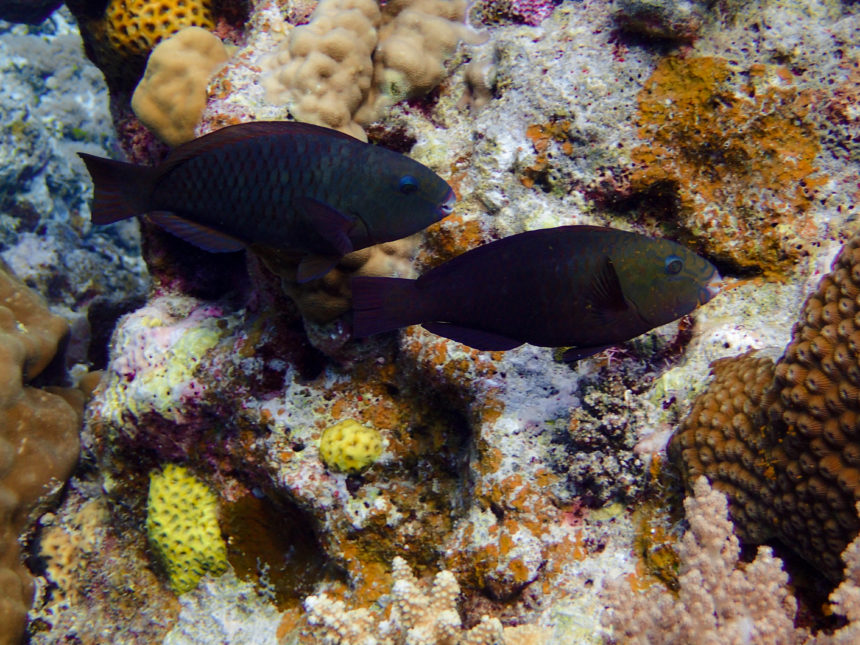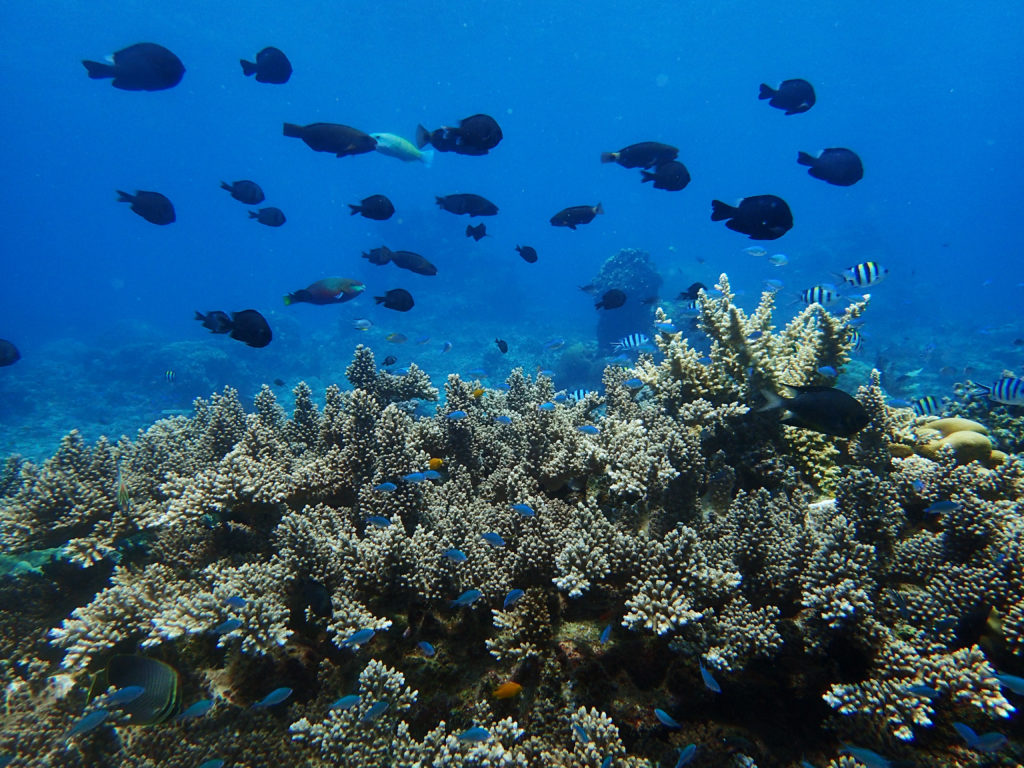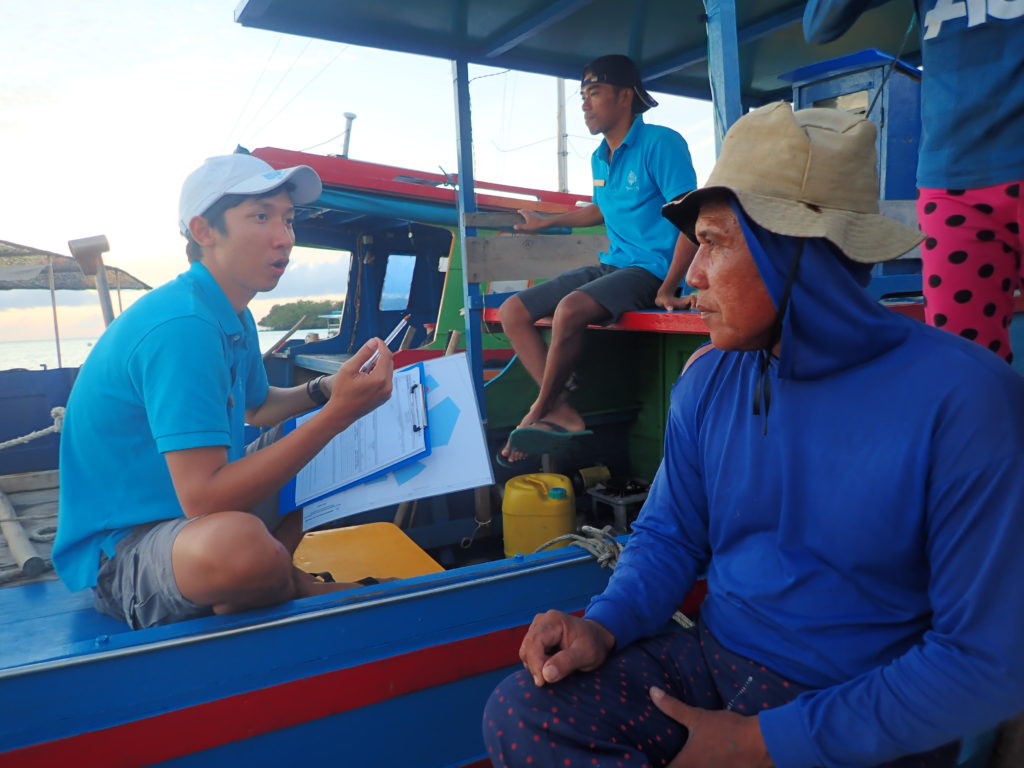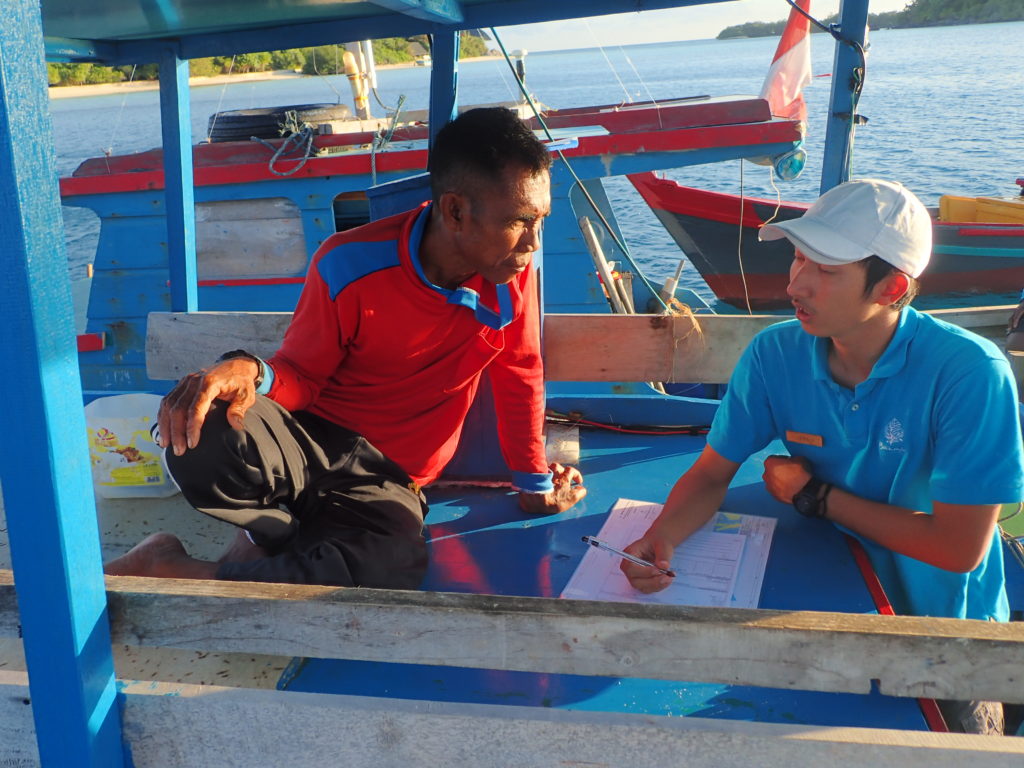Plant-eating fish or commonly known as herbivorous fish are the most dominant group of fish in the Indo-Pacific region. Herbivorous fishes have an important role in limiting the growth and dominance of algae, providing opportunities for coral recruits to grow. Besides, they have an important role in changing the ecosystem from algae-dominated area to coral reef-dominated one.1
There are many different kinds of herbivorous fishes and to make it easier for researchers to identify them they are separated into groups based on how they eat. These groups are: small and large excavators (parrotfish), grazers (rabbitfish, small angelfish, surgeonfish) and browsers (unicornfish, rudderfish, batfish). Each of these fish groups plays an important role in cutting algae growth, preventing algae shading so that corals can get enough sun, and creating a substrate for coral recruitment or allowing new coral individuals to settle.2The recovery process of coral reef ecosystems against pressure requires the presence of herbivorous fishes. The presence of herbivorous fishes in the ecosystem can reduce algae population by 13% – 53% in 12 days and is expected to reach 0% within 30 days. On the other hand, the absence of herbivorous fishes can result in the increase of algae population of up to 91% in just one month and that will in turn result in the destruction of coral reef ecosystem and loss of biodiversity in waters.3
Furthermore, overfishing and pressure on the ecosystem due to fishing activities make herbivorous fish groups prone to exploitation. Baronang fish or rabbitfish is one example of herbivorous fish that is quite well known in the fish market in Indonesia. In Karimunjawa, Central Java, herbivorous fish groups have experienced strong exploitation due to the use of fishing gears that are not environmentally friendly.
The establishment of Marine Protected Area or MPA is one of the many efforts to protect and preserve coral reef and fish population, including herbivorous fishes.4 MPA aims to protect and also maintain marine biodiversity, nature and culture through legal mechanisms.
In 2009, the Indonesian government made a commitment to have at least 200,000 square kilometers of marine protected areas by 2020. One of those marine protected areas that has been established is located in Anambas regency, Riau Islands called Taman Wisata Perairan Anambas (Anambas Water park) that has a total area of more than 1.2 hectares.
Plenty of herbivorous fish species are found near Bawah Island and there are at least 240 species of coral reef fish swimming around the area, making it the most diverse place in Taman Wisata Perairan Anambas.5
Since our establishment we have helped in maintaining the protected marine area. A number of conservation activities like creating artificial reef, coral transplantation and reef health monitoring are being conducted by our team on the field.
Moreover, we also hold activities for local communities that aim to educate and empower them. Through education and community development, they get to understand more about marine conservation, why they need to protect the ocean and they are able to find alternative sources of income besides fishing.
Protecting herbivorous fishes, or other marine creatures require the support and efforts of every party involved from government, private sectors to local communities. By working together we are helping bring the change in the Anambas area and allowing a healthy marine ecosystem to grow and thrive.
References:
1 Plass-Johnson, J. G., Ferse, S. C. A., Jompa, J., Wild, C., & Teichberg, M. (2015). Fish herbivory as key ecological function in a heavily degraded coral reef system. Limnology and Oceanography, 60(4), 1382–1391.
2 Green, A. L., & Bellwood, D. R. (2009). Monitoring Functional Groups of Herbivorous Reef Fishes as Indicators of Coral Reef Resilience A practical guide for coral reef managers in the Asia Pacifi c Region. Science.
3 Hughes, T. P., Rodrigues, M. J., Bellwood, D. R., Ceccarelli, D., Hoegh-Guldberg, O., McCook, L., Willis, B. 2007. Phase shifts, herbivory, and the resilience of coral reefs to climate change. Current Biology : CB, 17(4), 360–5.
4Varkey, D., Ainsworth, C. H., & Pitcher, T. J. (2012). Modelling Reef Fish Population Responses to Fisheries Restrictions in Marine Protected Areas in the Coral Triangle. Journal of Marine Biology, 2012(i), 1–18.
5 Mustika, P. L., Gunawan, T. & Erdmann, M. V. (eds) 2013, A Marine Rapid Assessment (MRAP) of the Anambas Islands Marine Tourism Park, 3-31 May 2012, Ministry of Marine Affairs and Fisheries, Indonesian Institute of Science (LIPI), the Government of Anambas Regency, The Nature Conservancy, Conservation International Indonesia, Denpasar.




